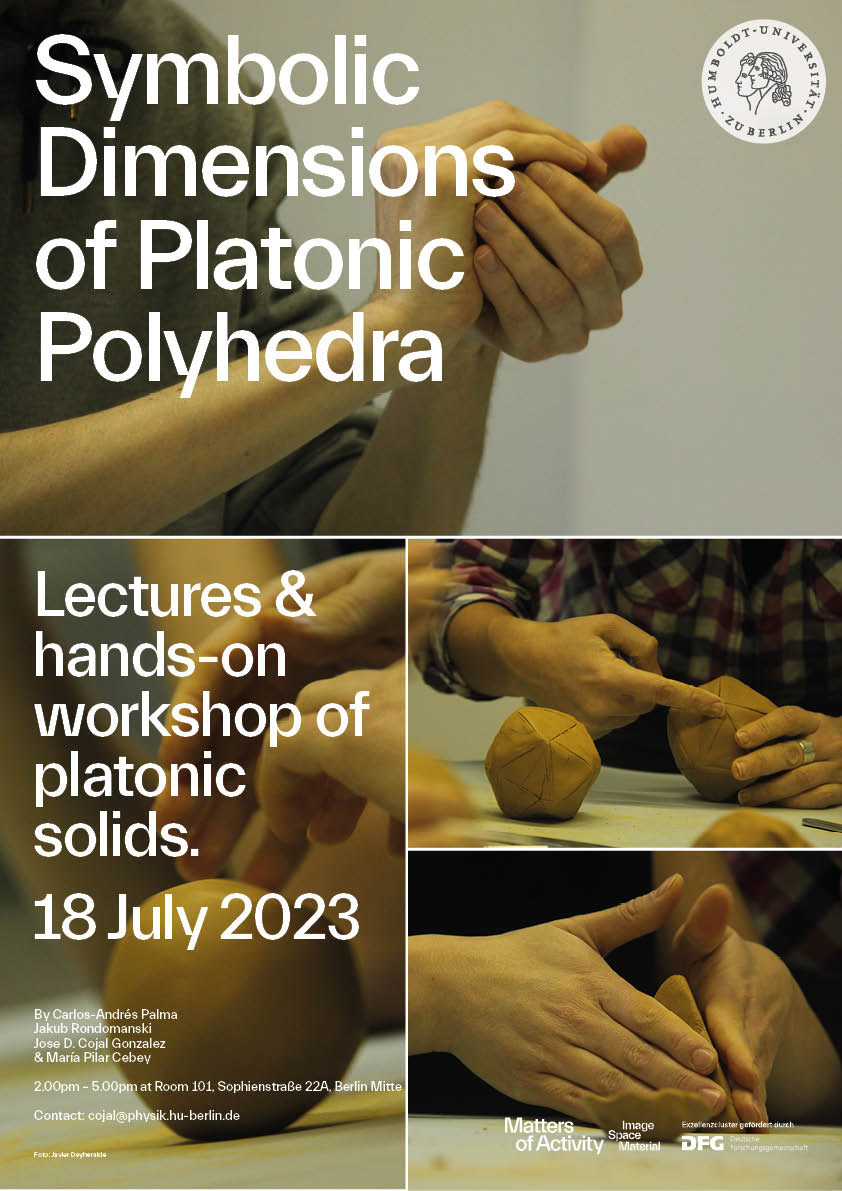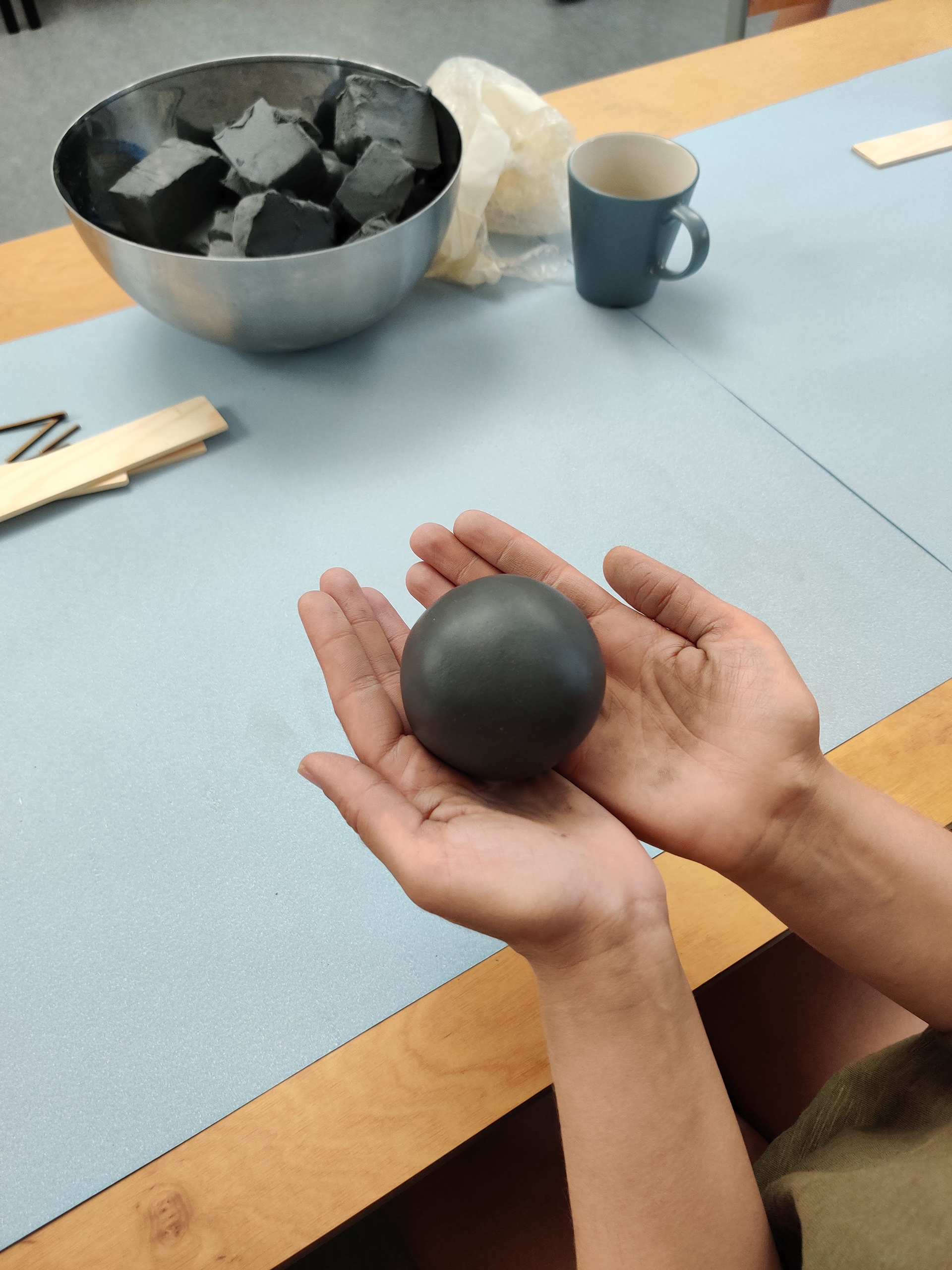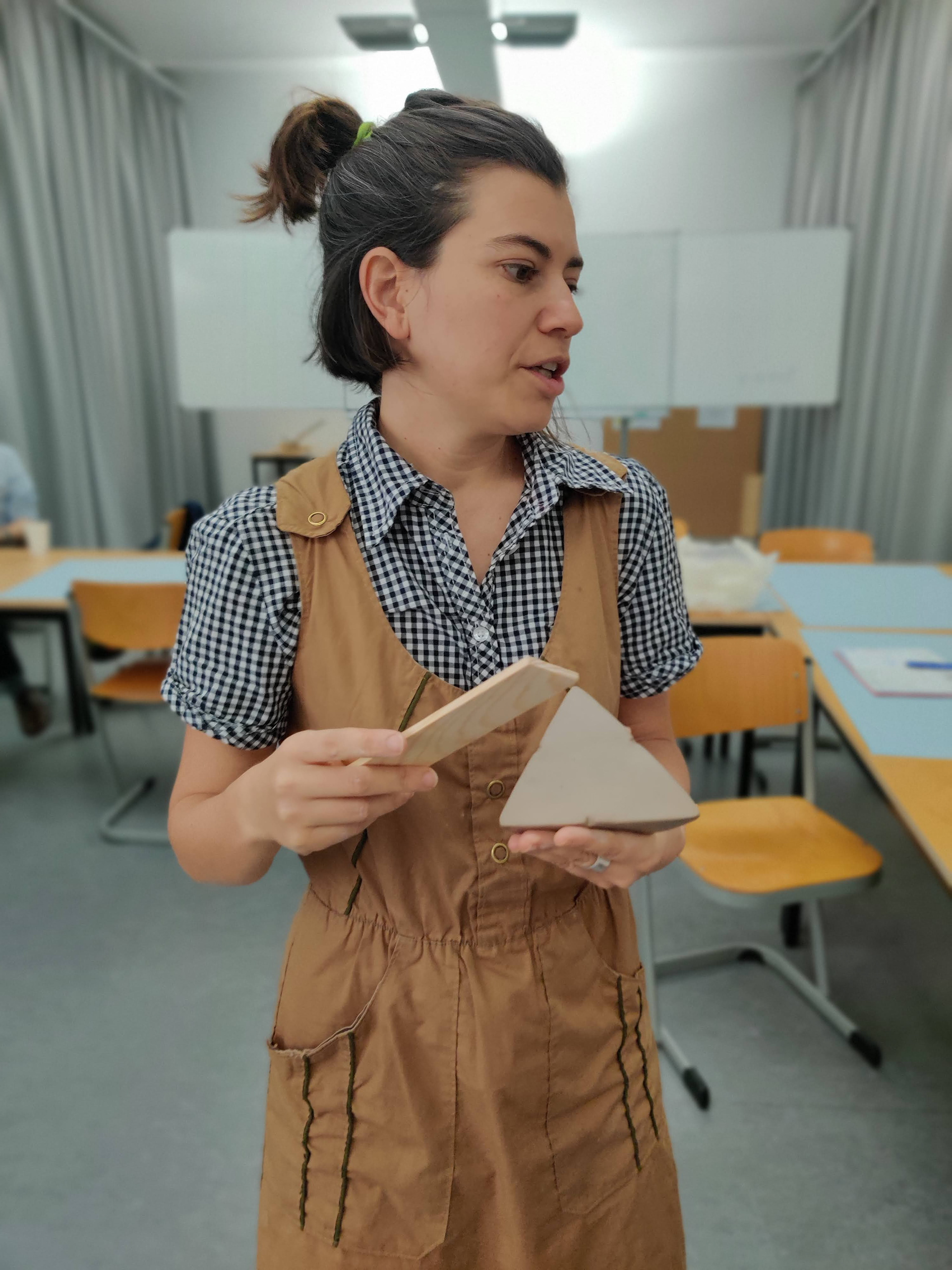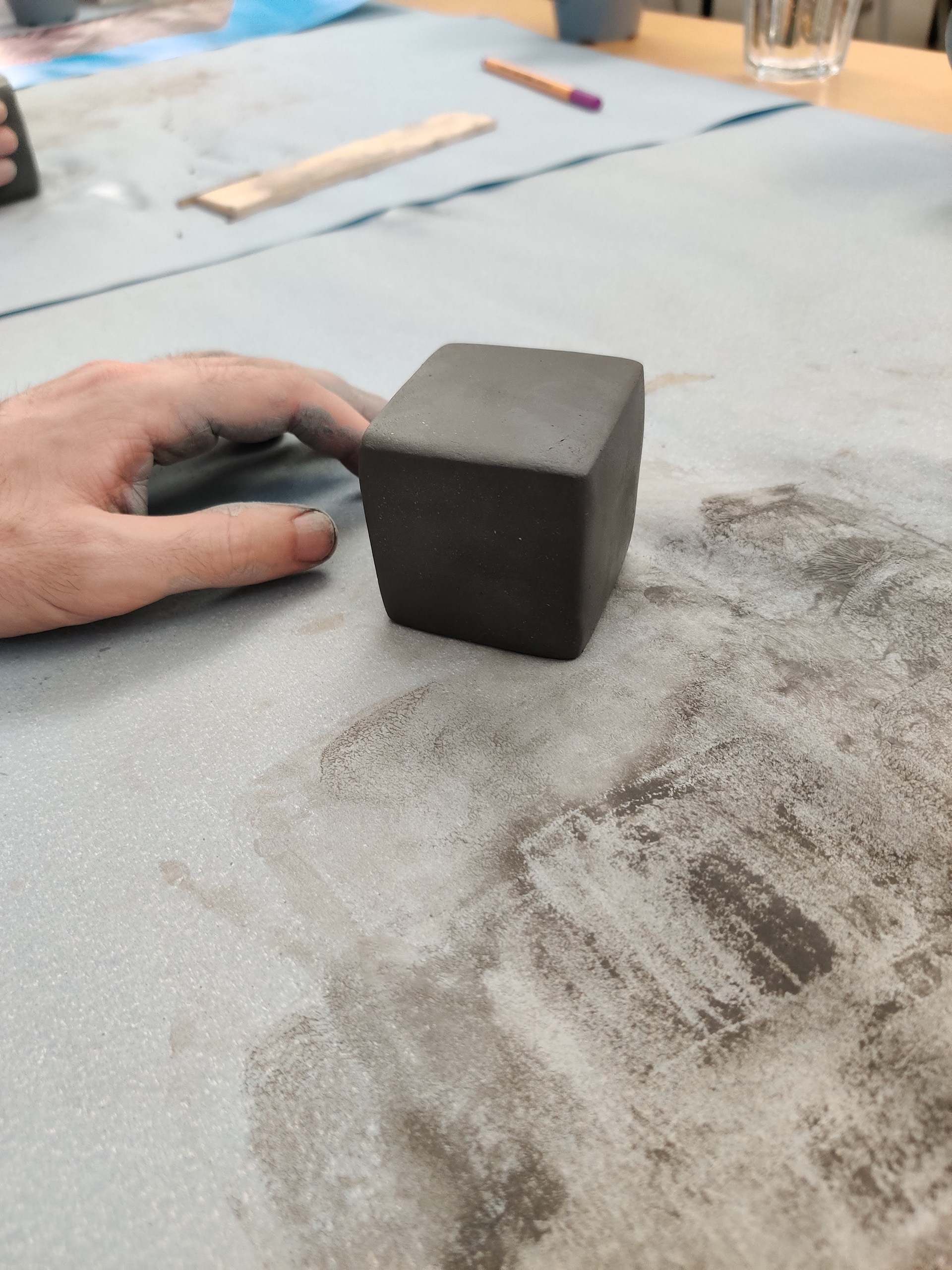





Clay workshop together with the Filtering group. Cluster of Excellence Matters of Activity. Berlín 2023.
Platonic solids are regular polyhedra, whose faces are congruent regular polygons and vertices connecting the same number of faces. In the 3D Euclidian space, there exist only five such solids: tetrahedron, cube, octahedron, dodecahedron and icosahedron. Plato theorized that all mater was composed of small polyhedra and related them to earth’s elements (1). Kepler attempted to relate the specific ratios between the five platonic solids to the ratios of planetary distances (2). Recently, the symbolic dimension of Platonic Solids has helped scientists in the representation of theories in Physics (3), geometrical fragmentation of matter across scales (4) and polygonal tessellations in molecular systems (5).
In this hands-on workshop, the participants are going to immerse themselves in the mindful activity of working with their hands, explore body-to-body transitions when modelling with clay and water, comprehend topological ideas and its dematerialization when modelling real materials, and collectively reflect about the experience of modelling Platonic solids.
Organizers
References
(1) Zeyl, D. Plato's Timaeus (2019). http://plato.stanford.edu/entries/plato-timaeus/
(2) Andrews, N. Gilding Kepler’s cosmology. J. Hist. Astron., 52, 3-32 (2021)
(3) Kassung, Ch., Rabe, J. P., Staudacher, M., Cojal Gonzalez, J. D., Droste, M., Paul, F. J.. »Cube of Physics.« Presented at Institut für Physik, Humboldt-Universität zu Berlin. 2021. http://cube-of-physics.org/
(4) Domokos, G., Jerolmack D.J., Kun F. and Török, J. Plato’s cube and the natural geometry of fragmentation. PNAS, 117, 18178-18185 (2020)
(5) Regős, K, Pawlak, R., Wang, X., Aschauer, U. Polygonal tessellations as predictive models of molecular monolayers. PNAS, 120, e2300049120 (2023)
(2) Andrews, N. Gilding Kepler’s cosmology. J. Hist. Astron., 52, 3-32 (2021)
(3) Kassung, Ch., Rabe, J. P., Staudacher, M., Cojal Gonzalez, J. D., Droste, M., Paul, F. J.. »Cube of Physics.« Presented at Institut für Physik, Humboldt-Universität zu Berlin. 2021. http://cube-of-physics.org/
(4) Domokos, G., Jerolmack D.J., Kun F. and Török, J. Plato’s cube and the natural geometry of fragmentation. PNAS, 117, 18178-18185 (2020)
(5) Regős, K, Pawlak, R., Wang, X., Aschauer, U. Polygonal tessellations as predictive models of molecular monolayers. PNAS, 120, e2300049120 (2023)